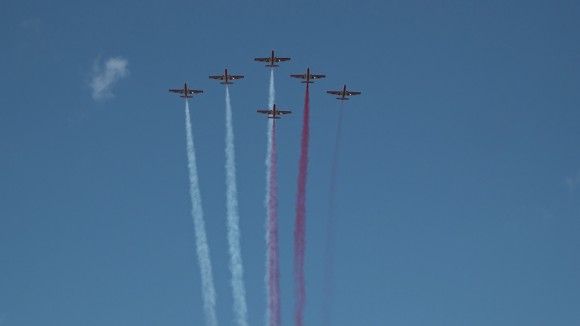Bulgaria Will Modernize Its Army. “Fighters, infantry fighting vehicles”
Bulgarian government adopted a new programme, the aim of which would be to expand the capabilities of the Army. The goal is to, inter alia, raise the defence expenditure and to intensify the modernization processes related to the armed forces.
According to the assumptions of the aforementioned document, adopted and approved by the Bulgarian Council of Ministers, level of the GDP contribution of the defence expenditure is going to be maintained, and its value is going to be equal to the one present during the year 2014 (ca. 1.3% of the GDP). The situation is going to be virtually the same, until 2018. However, until 2024, the above-mentioned level is going to be gradually increased, should “beneficial conditions” occur. In practical terms, this may mean that the level of national defence spending is going to be increased. Sofia, according to the relevant data shared by NATO, planned to decrease the Bulgarian defence budget in 2015.
The programme, the aim of which is to expand the defensive capabilities of the country, is going to initiate a wider scope of technological modernization of the Bulgarian Army. Among the priorities, the Bulgarian officials listed procurement of the new generation multi-role jets, in order to replace the post-soviet MiG-29, MiG-21 and Su-25 combat aircraft. Secondly, acquisition of infantry fighting vehicles for the modular, battalion-sized combat groups is also being planned. Additionally, what is more, Sofia is willing to acquire automated air-force command systems and 3D radars. Finally, when it comes to the Navy, the Bulgarians are going to modernize the E-71 class frigates, and acquire some modular patrol vessels.
The programme assumes that the capital expenditures contribution to the Bulgarian defence budget is going to be increased. At the moment that contribution constitutes only 6% of the total value. It is assumed that the capital expenditure contribution level is going to reach the value of 20%. Quantitatively, the Army is going to maintain the current number of troops, ranging between 37,000 and 40,000.
Endorsement of the programme, the aim of which would be to expand the defence capabilities, may contribute to breaking the deadlock situation, when it comes to modernization of the Bulgarian Armed Forces. Currently, most of the used armament is coming from the Soviet supplies, whereas e.g. the E-71 frigates are coming from the Belgian military surplus. On the other hand, the scale of increase of the defence expenditure is going to be probably significantly lower than in case of the Baltic States, and, at the same time, realizing the NATO objective, namely reaching the level of defence expenditure of 2% of GDP is, at least in the nearest future, not very plausible.
Realization of the modernization plans pertaining the Bulgarian Army is going to be, to a large extent, dependent on the economic situation of the country. Even after the modernization is realized, still, the capabilities possessed by Sofia, are going to be limited. Undertaking efforts, the aim of which is to expand the scope of capabilities of the Army is – in any case – a minor step towards increasing the Bulgaria’s contribution in the NATO collective security system, and this would have a significant impact on regional security.


WIDEO: Defence24 Days 2025: Premier Defence & Security Conference in CEE